The enchanting city of Venice is preparing for the most anticipated event of the year – the 2025 venetian carnival from the 15 February (Saturday) to 4 March (Tuesday). This centuries-old tradition transforms the already beautiful lagoon city into a fairytale wonderland of masks, costumes and a lively atmosphere. We’ll tell you about the highlights of this once in a lifetime experience, where the locals go to party, the top photo spots in the city and how to plan your trip to Venice. Let’s get started!
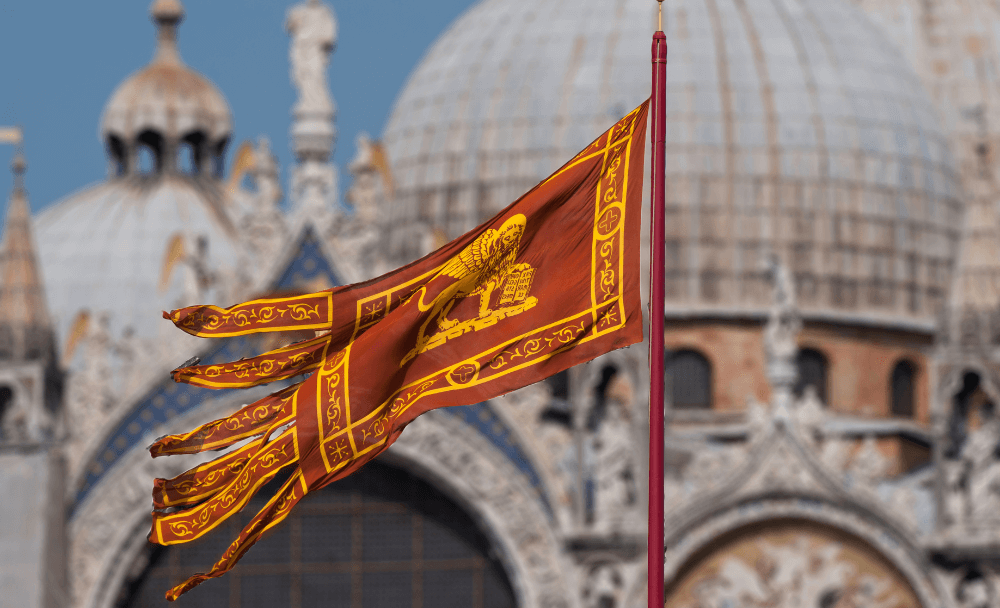
The origins of the Venice Carnival date back to the Middle Ages, with the first documented celebration taking place in 1162 linked to the Venice Republic’s victory over the Patriarch of Aquileia in 1162.
Initially, it served as an opportunity for Venetians from all social classes to come together and celebrate, temporarily blurring the lines between nobility and commoners.
Over time, the carnival developed into a magnificent spectacle that lasted several months. It reached its peak in the 18th century, when Venice was known as the entertainment capital of Europe. However, the festivities came to an abrupt end in 1797 when Napoleon conquered Venice and the celebrations were outlawed during the rule of Francis II, the Holy Roman Emperor.
After a long break, the carnival was revived in 1979. The Italian government decided to help Venice reconnect with its festive tradition to revitalise the city’s culture and economy. Since then, the Venice Carnival has become one of the most famous cultural events in the world, attracting millions of visitors every year.
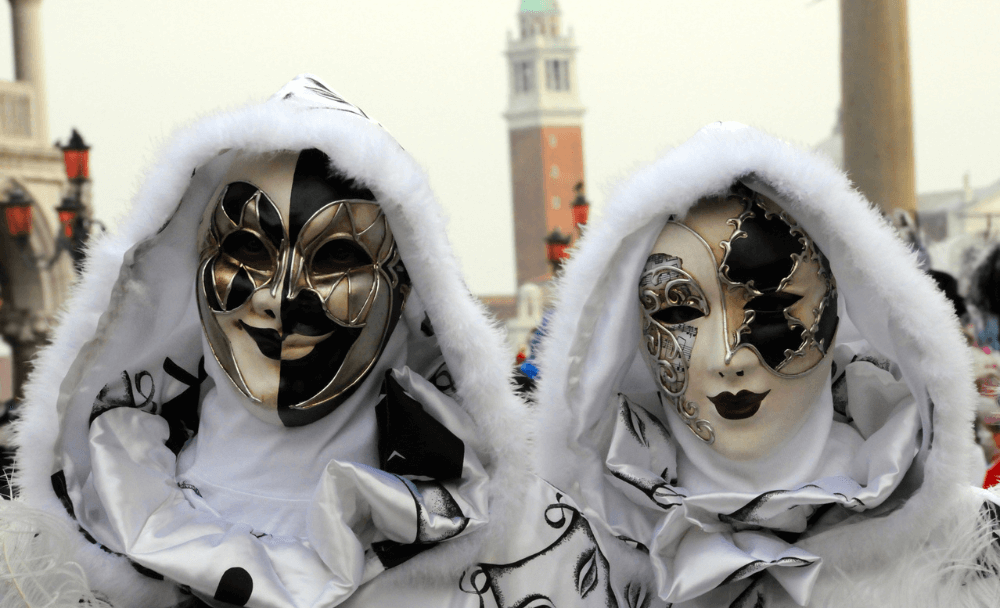
The Venice Carnival 2025 promises to be an unforgettable experience, with a plethora of events, performances, and activities that will leave visitors in awe. The festival will take place from 15 February (Saturday) to 4 March (Tuesday) – however, the main part of the carnival is from 19 February to 4 March 2025 – and will feature a range of exciting events, including traditional mask-making workshops, costume parades, and live music performances.
Imagine strolling through narrow, winding alleys, and suddenly you find yourself in the wide expanse of Saint Mark’s Square, a central location for the carnival events. This is where the heart of the carnival beats the loudest. Here the people of Venice gathered and the square is transformed into a fascinating sea of elaborate costumes, each one more beautiful than the last.
Strolling through the city, you feel transported to a bygone era when nobles and commoners alike enjoyed the freedom offered by their costumes. The plague doctor mask, with its striking design, is a popular costume seen during the carnival.
One of the highlights of the 2025 festival will be the “Festa delle Marie” (Feast of the Marys), a traditional Venetian celebration that takes place on the first Saturday of the Carnival. The event features a procession of 12 beautiful girls, dressed in elaborate costumes, who are accompanied by musicians and flag-wavers. The procession ends at Saint Mark’s Square, where the girls are presented with gifts and prizes.
Visitors can also look forward to a range of new and innovative events, including a virtual reality experience that will allow them to explore the city’s hidden corners and secrets. The festival will also feature a variety of food and drink stalls, offering traditional Venetian cuisine and drinks, such as fritto misto and cicchetti. With so much to see and do, the Venice Carnival 2025 is set to be a magical journey through time.
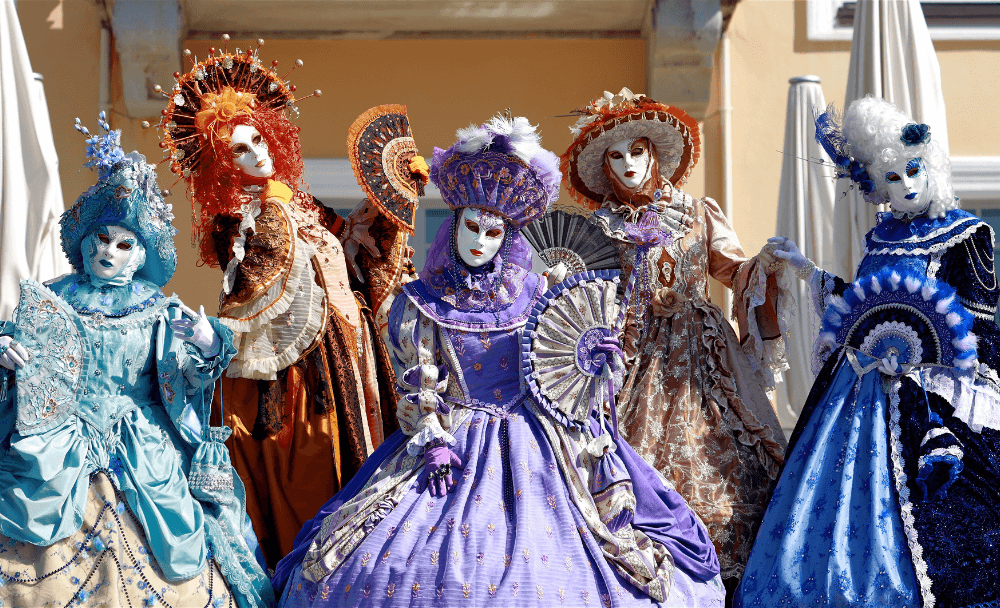
Venice Carnival 2025 promises an array of spectacular events:
Watch in awe as a costumed figure descends from the Campanile to the Piazza San Marco, officially opening the carnival.
This parade commemorates the rescue of Venetian brides from pirates, featuring 12 beautiful girls in traditional costumes.
Known as the most exclusive masquerade ball in the world, this event transforms Palazzo Pisani Moretta into a fairytale setting.
On Venice’s main waterway, you can admire a colourful procession of decorated boats.
Mardi Gras is another famous carnival event. Meaning ‘Fat Tuesday’ in French, it involves feasting and festivities before Lent, similar to the Venice Carnival’s rich traditions and historical significance.
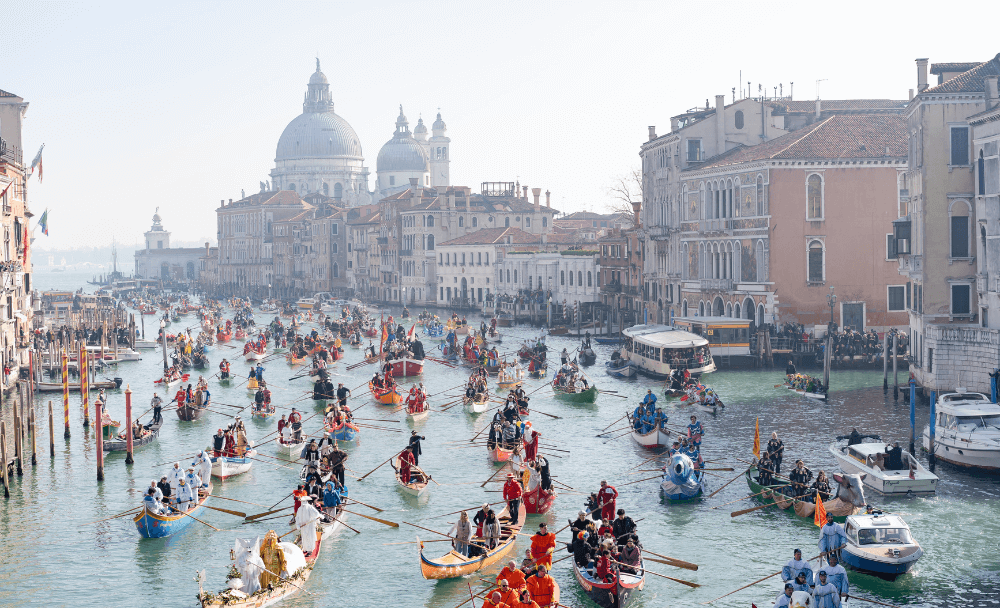
Taking photos of the costumes and masks is a popular activity during the Venice Carnival. Many of the costumed models are happy to pose for photos, and some even expect to be photographed.
The challenge of taking photos is getting up close and personal with the costumed models without bystanders in the background. Here come our favourite spots to to achieve some beautiful photos.
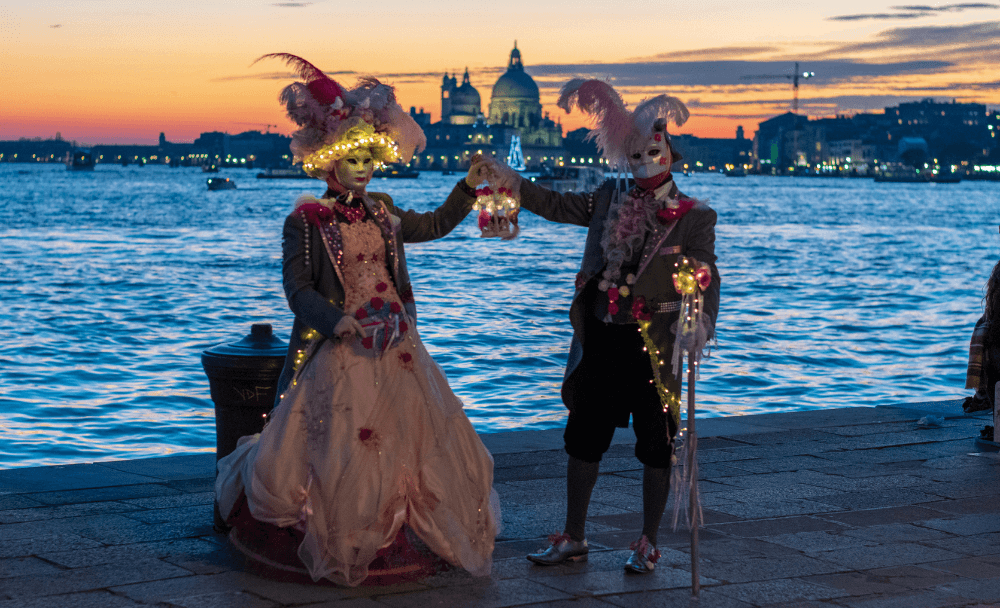
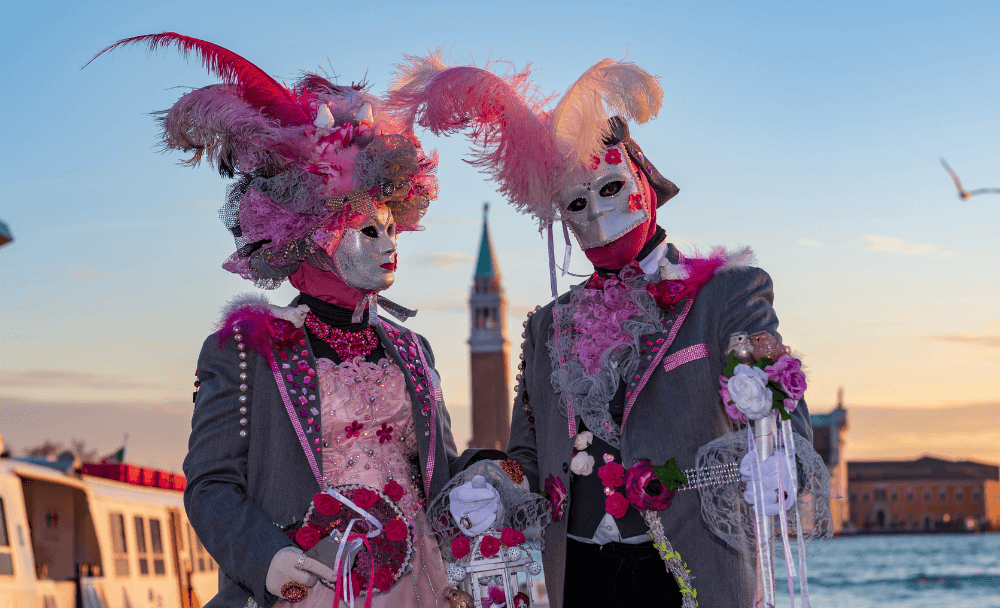
Venetian masks are an integral part of the carnival and have a fascinating history. Their use dates back to the 13th century, when the first law regulating the wearing of masks was documented in 1268. In 1339, a regulation was introduced that prohibited wearing false beards and wigs during the carnival to prevent criminal activities, as these disguises allowed robbers and murderers to conceal their identities.
Initially, masks served practical purposes:
The production of masks became a respected art form, and craftsmen known as ‘maschereri’ established 1436.
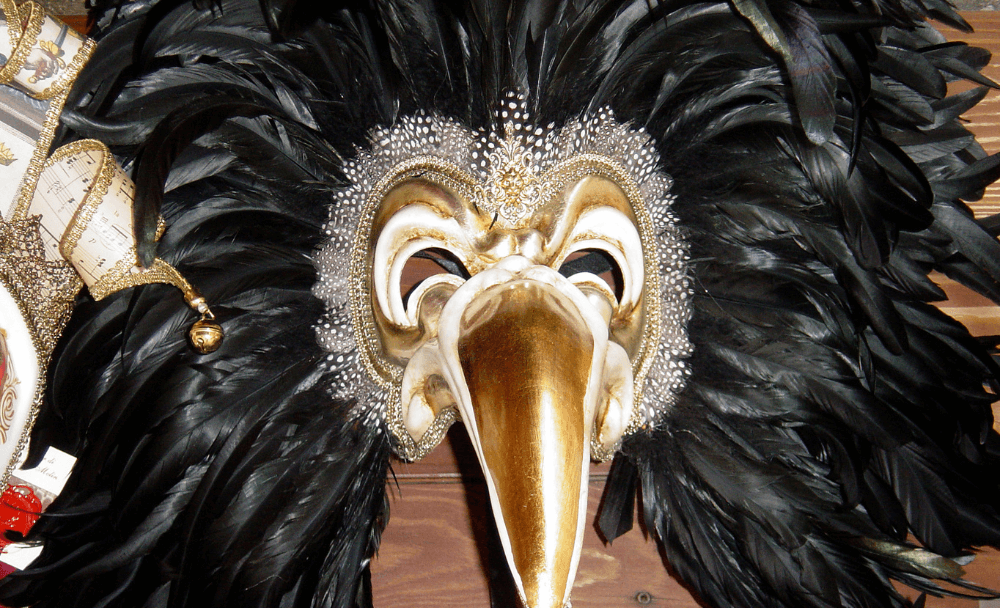
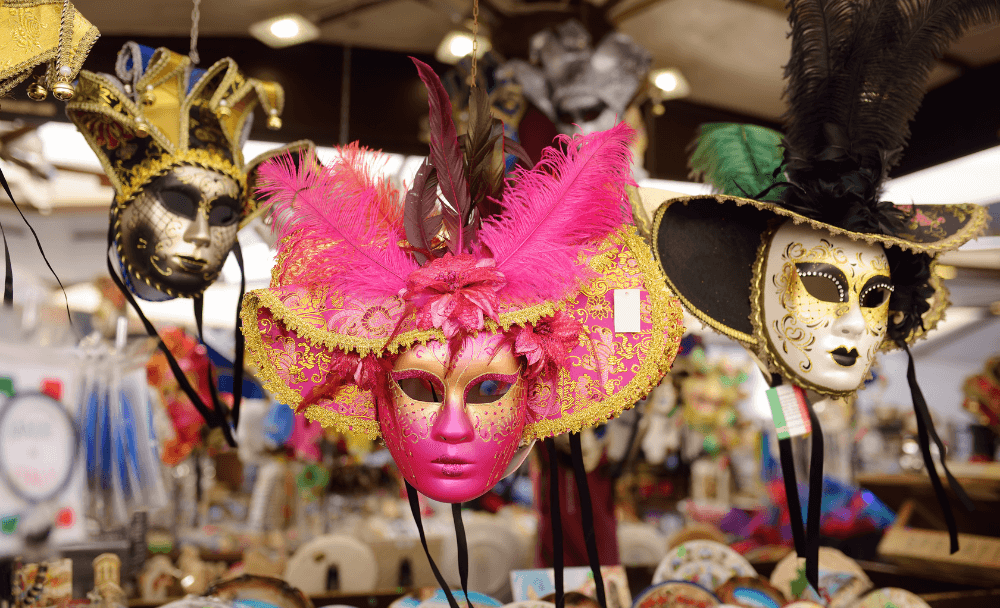
Location: Calle delle Botteghe, Dorsoduro
Description: Established in 1986, this mask shop is renowned for its handmade Venetian masks and offers mask-making workshops. Visitors can see unique creations not available online.
Location: Near Rialto Bridge
Description: A family-run shop popular with celebrities, known for its quality and creativity. They create both traditional and modern masks, often featured in films.
Location: Near the Grand Canal
Description: Known for its historical costumes and masquerade attire, this shop allows customers to buy or rent stunning creations for Carnival.
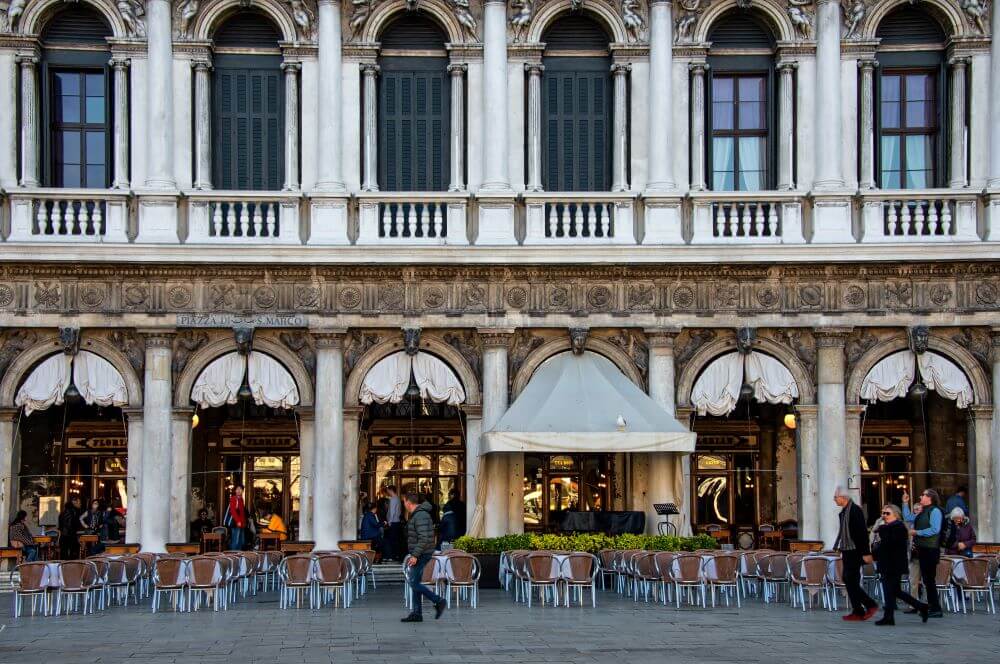
Saint Mark’s Square (Piazza San Marco) is the heart of the Venice Carnival, and it’s where the majority of the events and activities take place. The square is transformed into a vibrant and colorful space, filled with elaborate costumes, masks, and street performers.
The square is also home to the famous “Caffè Florian”, a historic café that has been serving coffee and pastries since 1720. Visitors can enjoy a cup of coffee or a snack while taking in the sights and sounds of the Carnival.
One of the highlights of the square is the “Gran Teatro”, a large stage that hosts a range of performances, including concerts, dance shows, and theater productions.
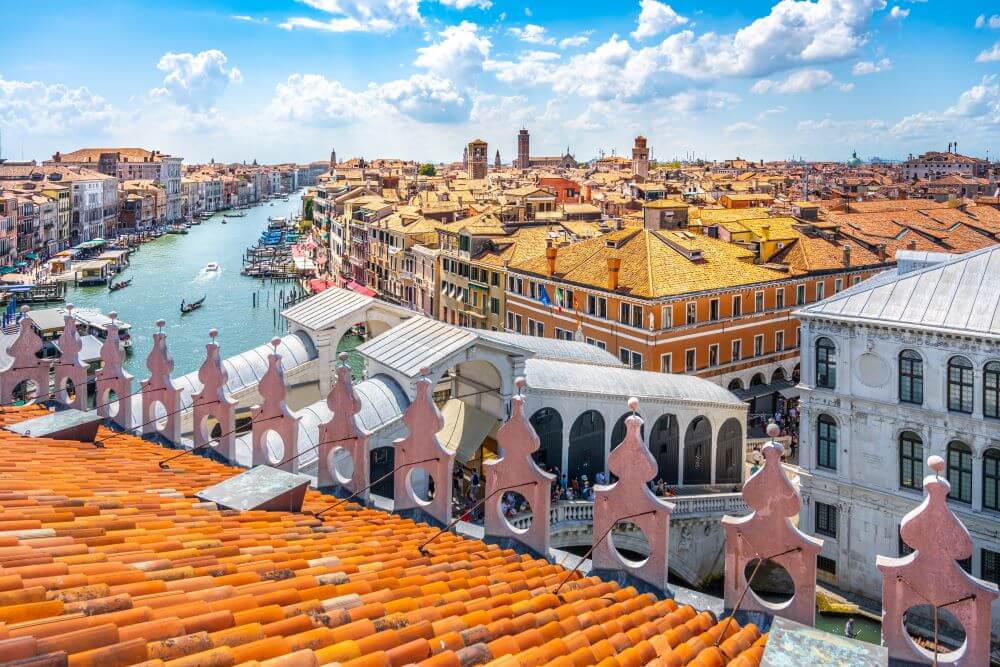
This hidden spiral staircase offers stunning views of Venice’s rooftops and is far less crowded than more famous viewpoints. Located near Campo Manin, it’s a beautiful blend of Renaissance, Gothic and Byzantine architecture.
Known as the “Sex Worker Bridge,” this quirky spot in the Cannaregio district has a fascinating history related to Venice’s past regulations on prostitution.
One of Venice’s best-kept secrets, offering breathtaking 360-degree views of the city. It’s centrally located but often overlooked by tourists.
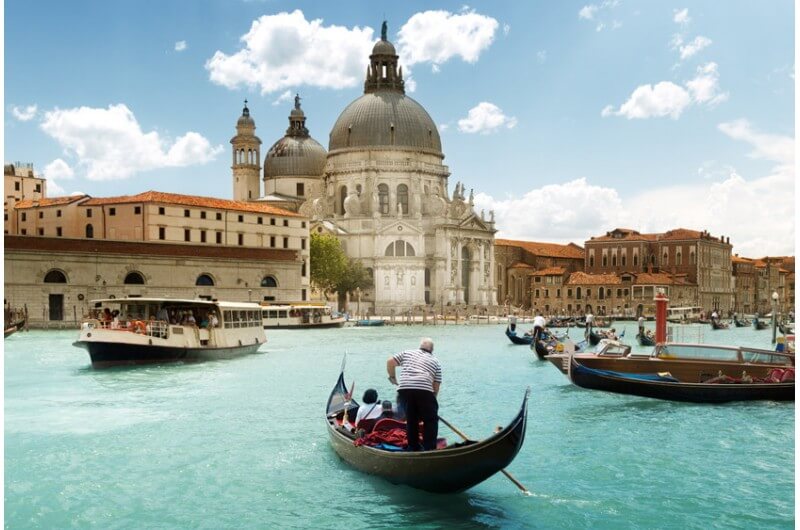
Visit the Glass Cathedral (former Chiesa Santa Chiara) on Murano island to witness impressive glassblowing demonstrations in an exclusive setting.
The Doge’s Palace, an outstanding example of Gothic architecture, served as the seat of the Doge and is now one of the most visited attractions in the city.
Venice’s largest canal, the Grand Canal, is lined with some of the city’s most famous buildings and monuments. During the cruise, you will see the Rialto Bridge, the oldest and most famous bridge in Venice, and admire the palaces along the canal.
The theatre is one of the most famous opera houses in the world. Many world premieres have been staged here, including Verdi’s Attila and Wagner’s Ring of the Nibelung, making it a must-see for all opera fans. Its impressive architecture and interior design are also truly breathtaking.
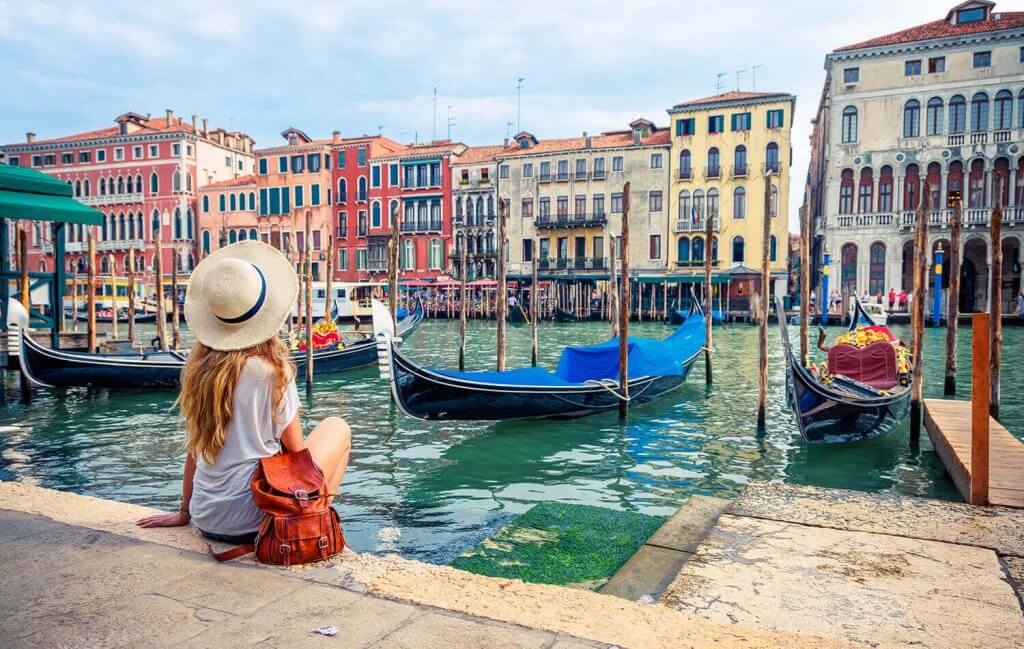
To make the most of Venice Carnival 2025:
One ticket for all top attractions
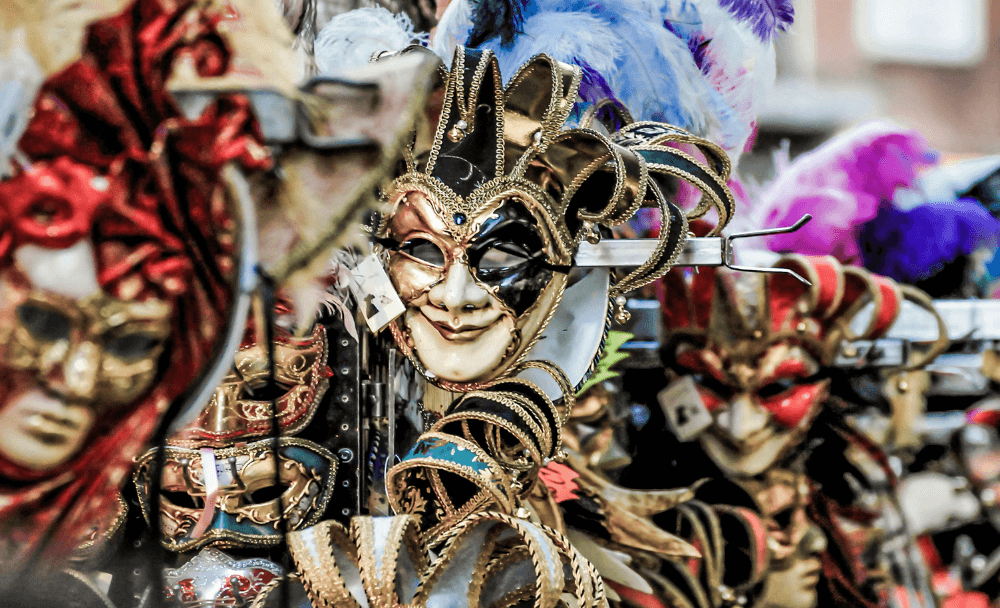
While the Venice Carnival is a fun and exciting event, it’s essential to remember to follow some basic safety and etiquette rules to ensure an enjoyable experience for all.
Firstly, visitors should be aware of their surroundings and keep an eye on their belongings, as pickpocketing and petty theft can be a problem in crowded areas. It’s also essential to follow the instructions of the local authorities and event staff, who are there to ensure everyone’s safety.
Visitors should also be respectful of the local culture and traditions, and avoid wearing masks or costumes that may be considered offensive or inappropriate. It’s also essential to remove masks when entering churches or other places of worship, as a sign of respect.